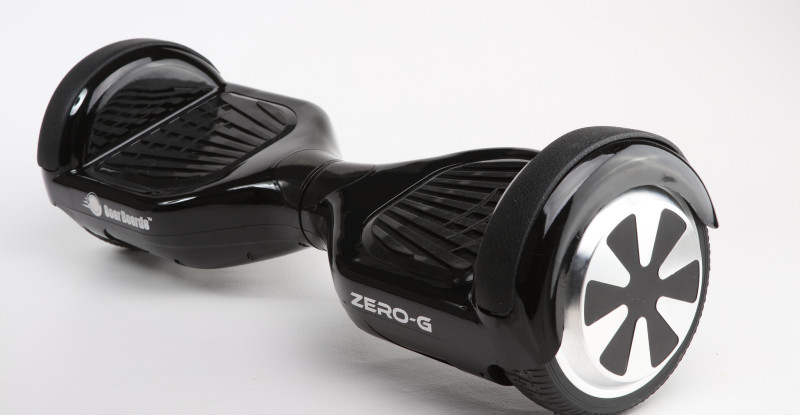The dangers posed by lithium batteries are well reported. If not handled and stored correctly, the batteries can become unstable and overheat; and they’ve already been traced to a multitude of smoke and fire incidents in both aircraft cargo holds and cabins. The US FAA outlines the types of batteries allowed in carry-on and checked luggage. But during this holiday shopping season, a popular self-balancing mobility device called the “Hoverboard” is bringing to light the discrepancies between FAA regulations and airlines’ own policies regarding battery safety. It’s clear that some carriers have taken steps beyond FAA policy while others have not.
The Hoverboard is a two-wheeled device about the size of a skateboard, on which a rider stands and then shifts his or her weight to make it move forward or backward. It operates much like a Segway scooter, but without the handlebars, and at a more affordable price point. Prices range from just over $100 to nearly $1,000, depending on the Hoverboard’s operational range and weight capacity.
RGN reached out to America’s largest airlines to understand where they stand on Hoverboard transport. Virgin America said plainly that it does not accept Hoverboards as checked luggage. “In keeping with FAA safety policies and recommendations, we do not allow spare lithium batteries in checked baggage. We also don’t allow Hoverboards in checked luggage, as there is generally no easy way to remove or separate the lithium battery,” noted Virgin America director of corporate communications Dave Arnold.
JetBlue Airways was one of the first carriers to disallow Hoverboards to be checked or brought on board as carry-on. Indeed, the carrier does not classify Hoverboards as either mobility devices or personal electronic devices, but instead lists them under the ‘Dangerous Goods’ category. “As these items are considered HAZMAT [hazardous materials] crewmembers are not authorized to ship these devices on behalf of customers,” read a JetBlue notice to passengers.
I like @jetblue's name for those things that are not hoverboards. "balance gliders" pic.twitter.com/G36smMkjZl
— Anthony Quintano (@AnthonyQuintano) November 20, 2015
In recent days, American Airlines, Delta Air Lines, and United Airlines have also banned hoverboards in checked or carry-on luggage.
.@Delta bans hoverboards out of safety considerations @DeltaNewsHub https://t.co/ZoYOucge4x
— Delta News Hub (@DeltaNewsHub) December 10, 2015
Southwest allows the whole device – including the battery – as checked luggage with the stipulation that the battery must be rated under 160 Watt-hours.
The airlines that still allow Hoverboards as checked luggage are following current FAA rules, which state: “Except for spare (uninstalled) lithium metal and lithium-ion batteries, all the batteries allowed in carry-on baggage are also allowed in checked baggage.
“The batteries must be protected from damage and short-circuit or installed in a device. Battery-powered devices – particularly those with moving parts or those that could heat up – must be protected from accidental activation.”
But the rules governing battery transport could ultimately change. Some carriers have already stopped bulk battery shipments. And this fall the FAA backed a ban on shipping lithium batteries on commercial airlines, though the International Civil Aviation Organization (ICAO) later rejected such a ban.










